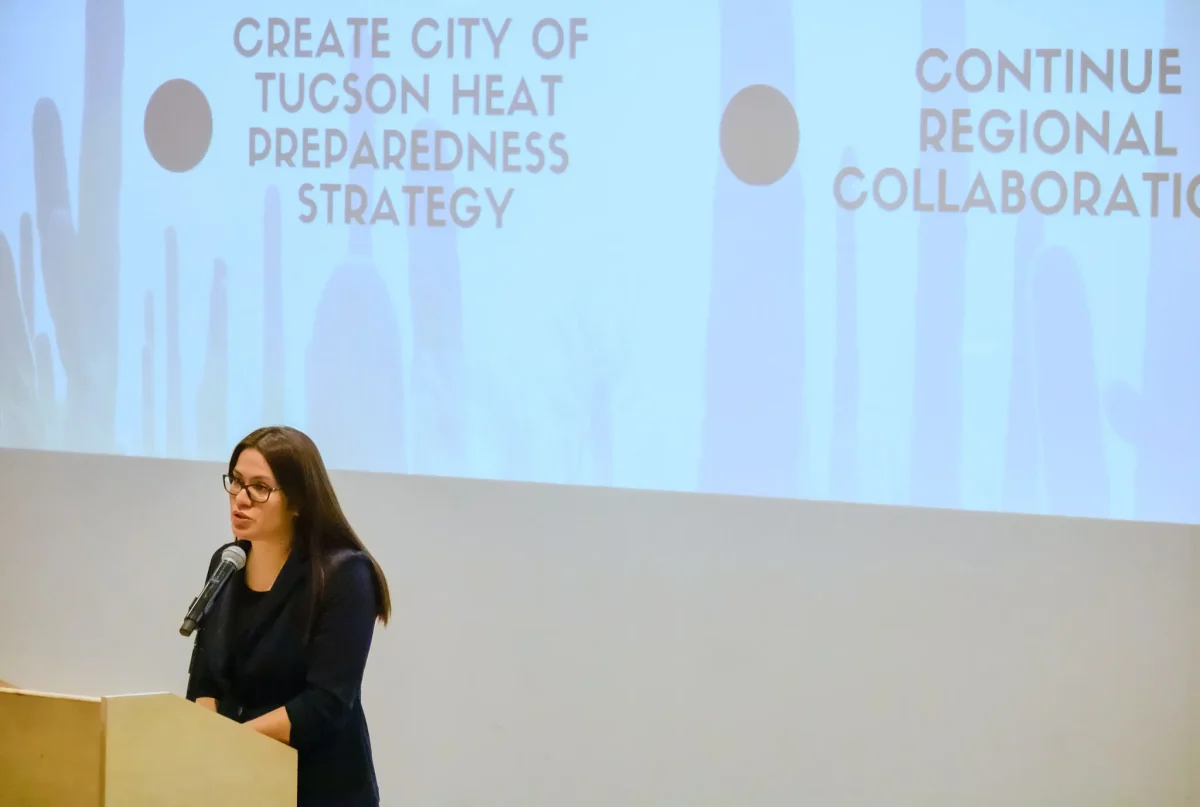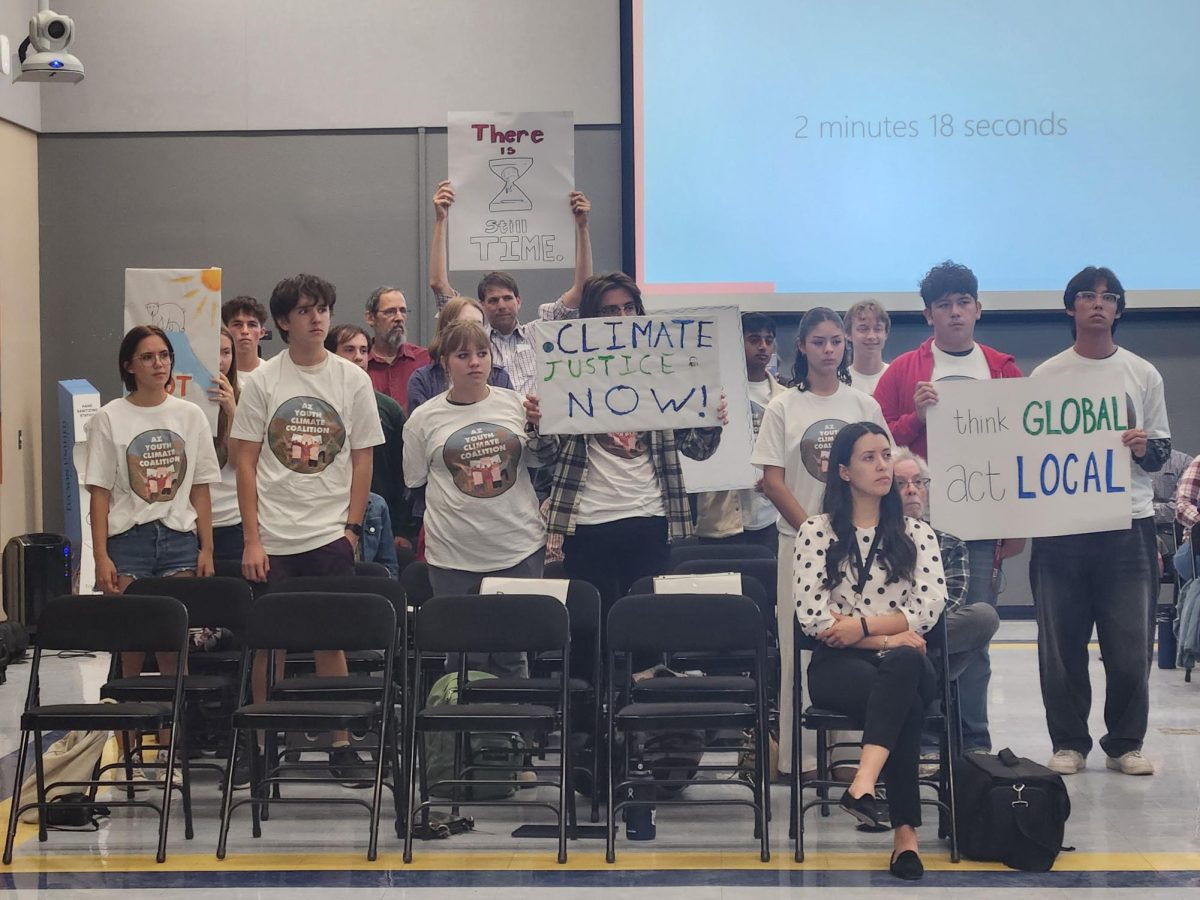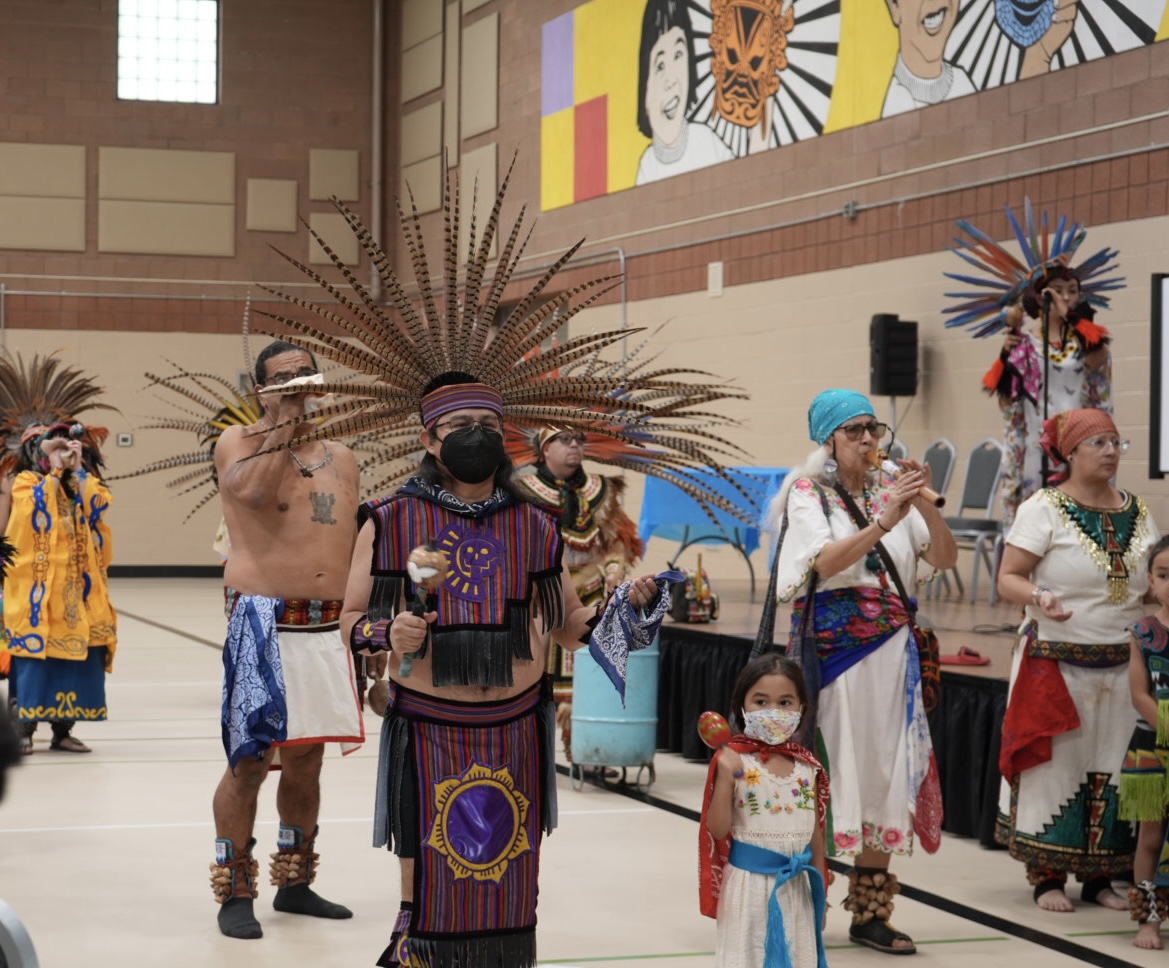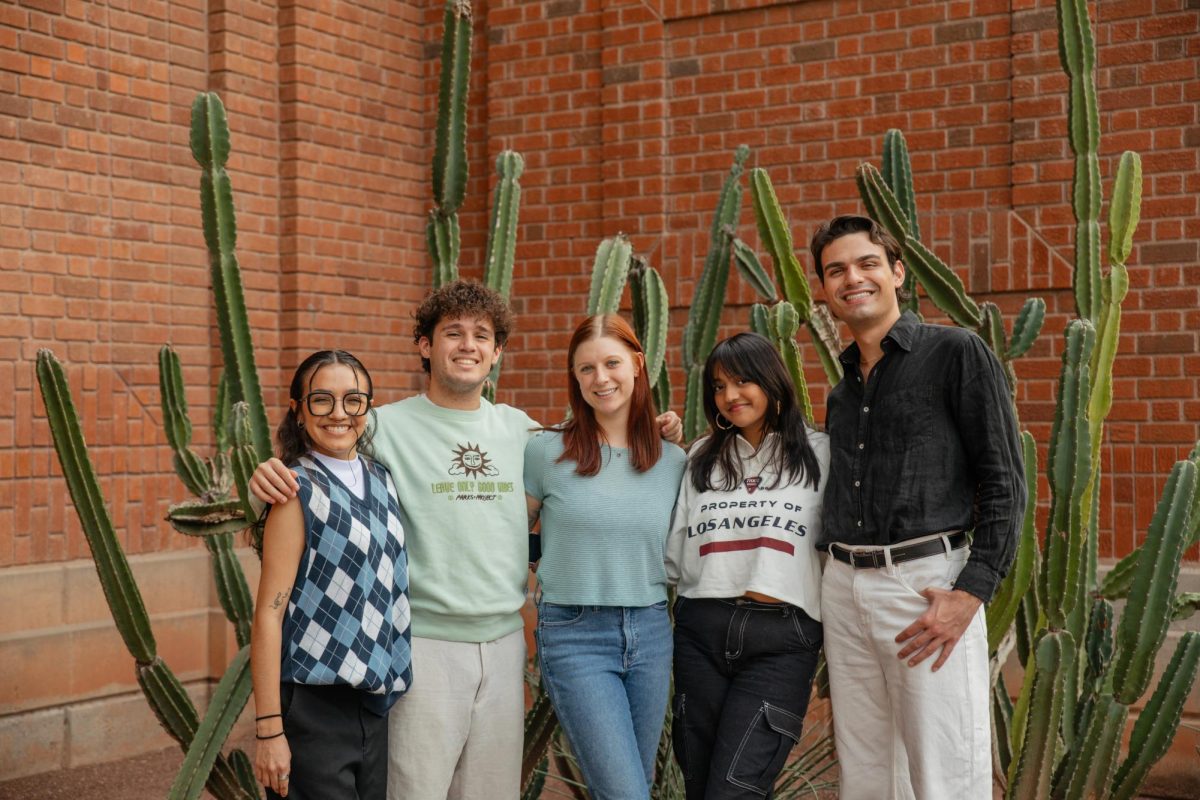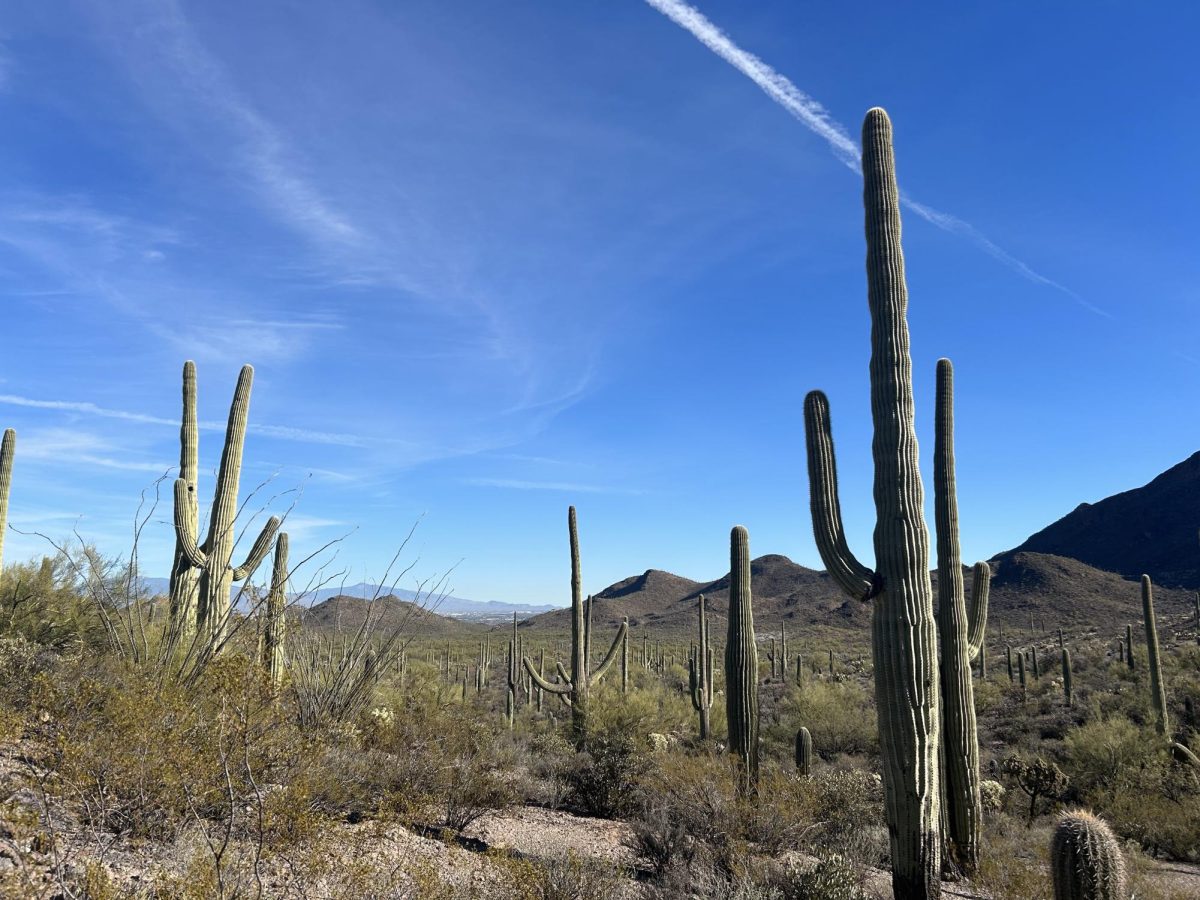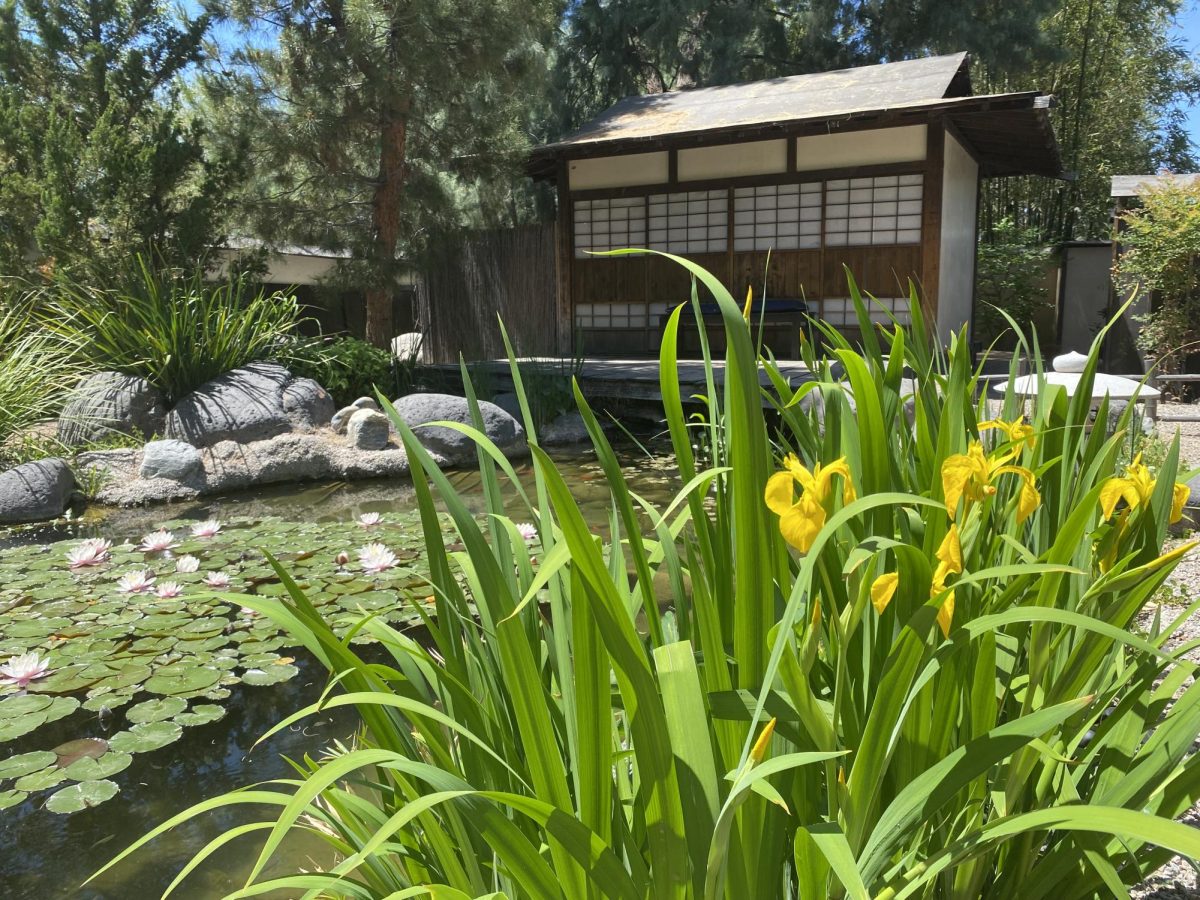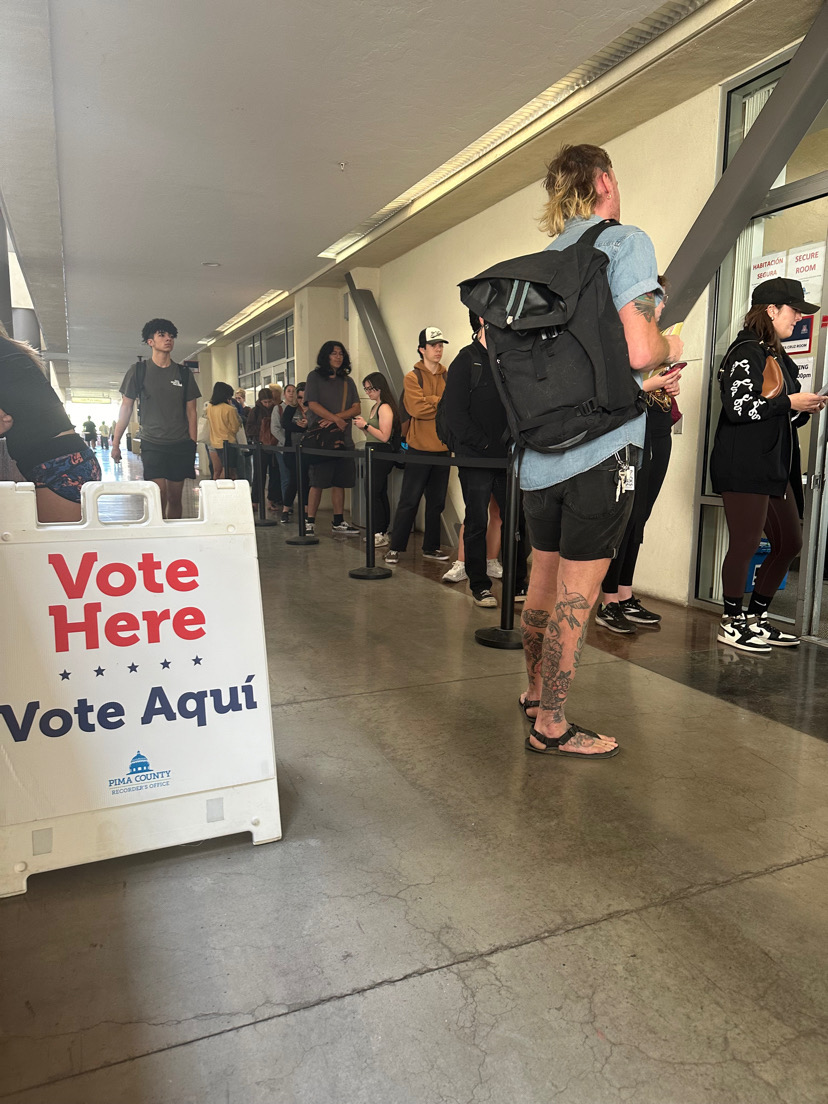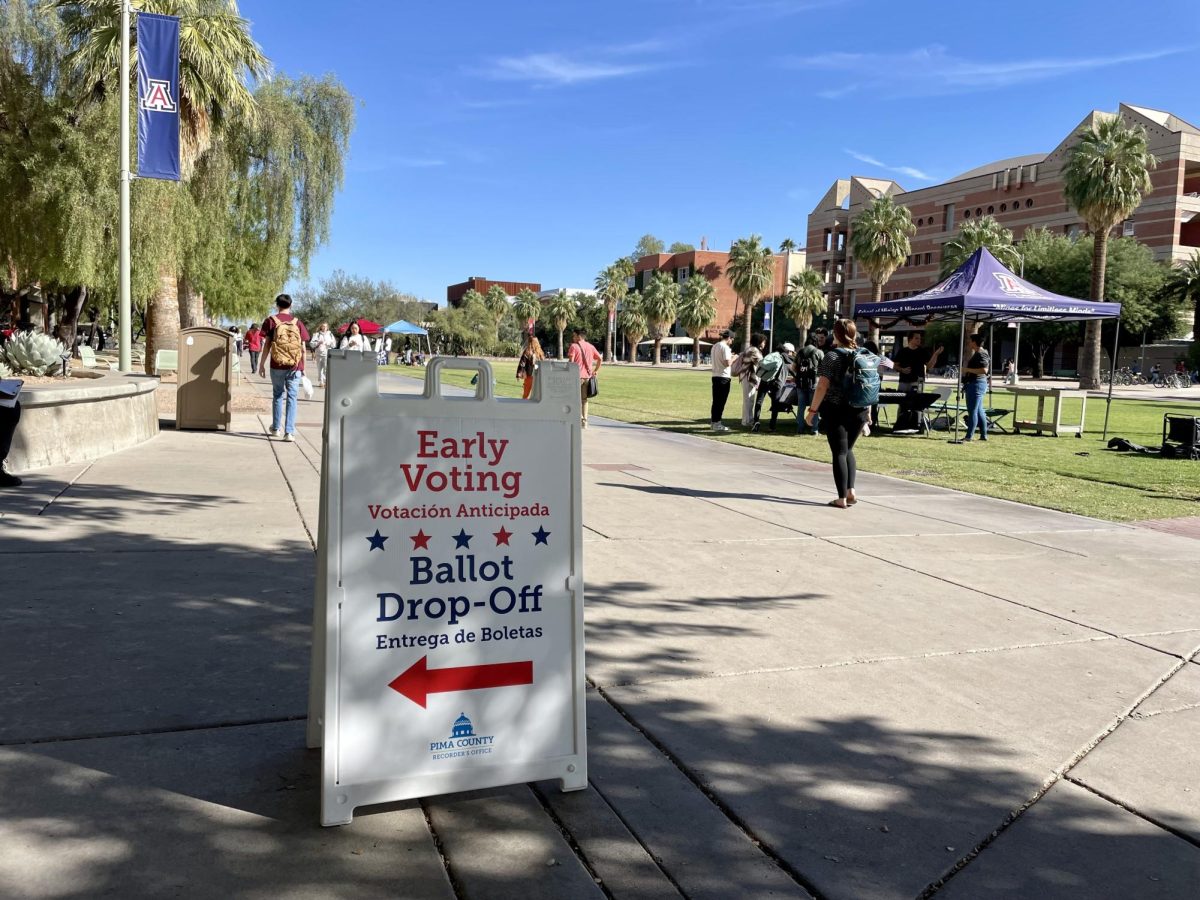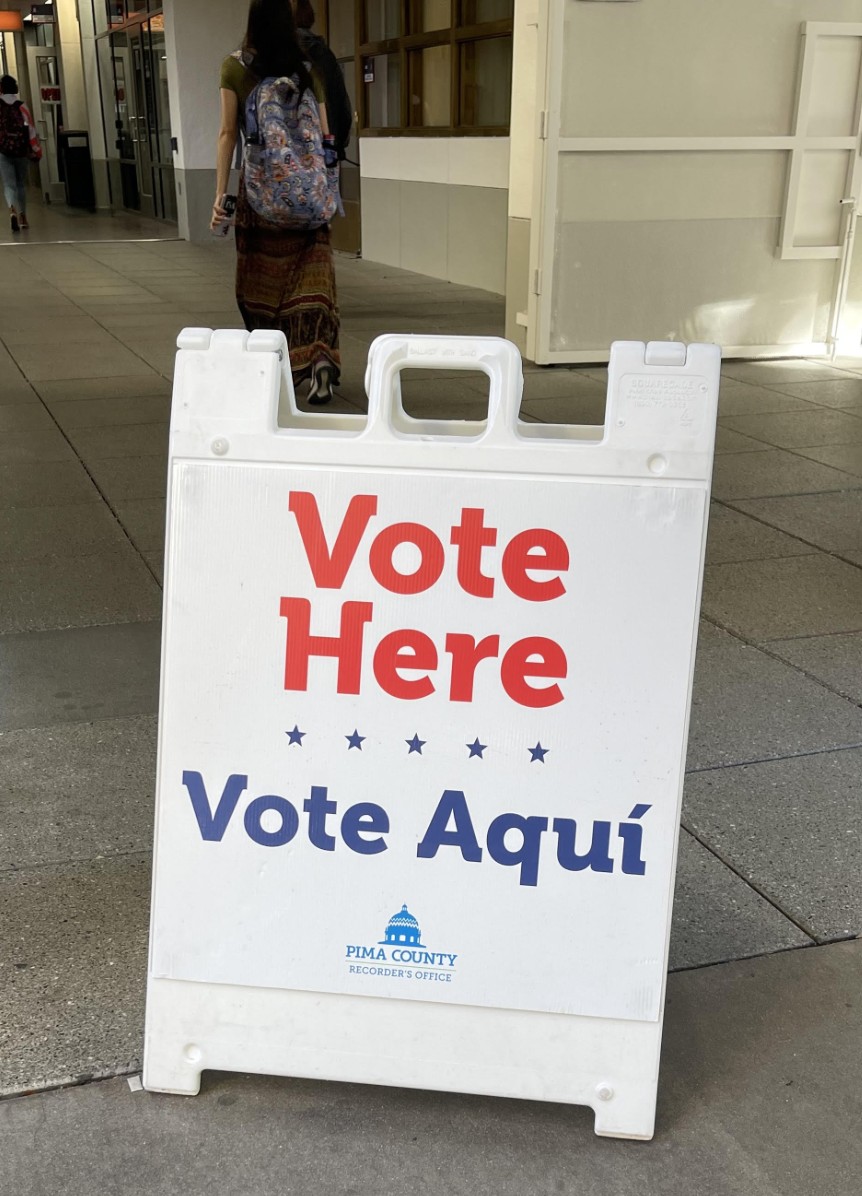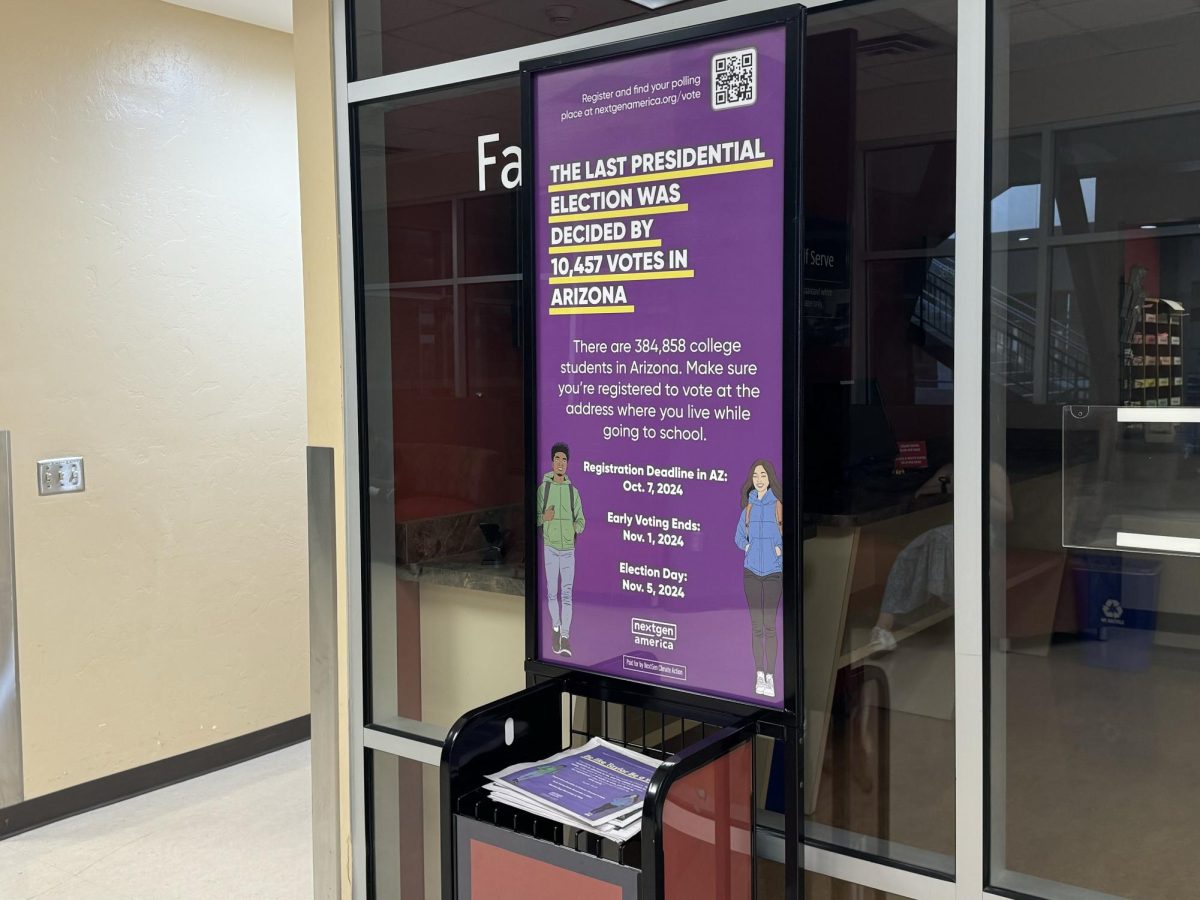This story first appeared in Arizona Luminaria.
“In a disaster, it’s the people next door that keep you alive,” Rosemary Bolza said, wearing a U.S. Public Health Service T-shirt and sitting among Southern Arizonans ready for a discussion that would put the needs of their desert neighbors first in the extreme heat this summer.
On a chilly Saturday in February, the long-time Tucson resident and other community members started the morning bundled up in sweaters and scarves. But they came ready to plan for another season of increasingly severe temperatures at Tucson’s first Southern Arizona Heat Planning Summit.
Bolza works with a local grassroots coalition called Building a Resilient Neighborhood, which encourages strong neighbor relationships in emergency preparedness.
“I would recommend that all of the city departments see this as a priority,” she said.
The free forum on climate action was open to the public. The goal for the daylong conversations was to bring people together for brainstorming heat resiliency in Southern Arizona. Fatima Luna, Tucson’s chief resilience officer told the more than 100 people at the event that there is no better time than the winter to prepare for the hot summer we know is coming.
Last July was Tucson’s hottest month on record, averaging at 94.2 degrees: 6 degrees warmer than normal. The National Weather Service cites 14 total monthly records either set or tied with July 2023, including 29 days of 105 degree — and hotter — high temperatures.
The summit, hosted at the University of Arizona’s Environment and Natural Resources 2 Building, was sponsored by the city of Tucson, Pima County Health Department, Climate Assessment for the Southwest, Tucson Resilient Together and several UA departments.
The group nearly filled a university lecture hall, and was split into five breakout sessions where conversations were focused on the following topics: public health and healthcare; community and neighborhood level action; workforce and heat protection; energy and our grid; and built environment.
We know not everyone was able to carve out time on a busy Saturday to make it to the heat planning summit. So with the environment being one of the main issues you’ve told us you want to learn more about, we made you this guide on how Southern Arizonans are working together for better solutions.
Communication within and across communities
Members who joined the community and neighborhood level action room were led by Luna and facilitated by Elise Otto, a UA doctoral student studying geography. The group used a set of questions to direct their conversation, but quickly shifted into their own brainstorm session.
Otto immediately started writing on the whiteboard, which quickly filled up in blue marker with the group’s reflections on existing heat resiliency programs and new ideas.
No matter where the brainstorm veered, community remained their priority. They focused on populations that are disproportionately affected by heat: people of color, mothers, unsheltered people, residents with mental health conditions, people with disabilities and families or individuals facing income inequality.
Bolza stressed the importance of spreading awareness block-by-block for environmental threats like heat, especially during extended power outages.
She proposed a neighborhood watch plan that would not only focus on crime as she said they do now, but also would serve as a way “to look out for each other.” Even in a middle-income neighborhood like her own, she said that some people do not have air-conditioning, which can be deadly in extreme heat.
Theresa Cullen, the director of the Pima County Public Health Department, presented sobering information about heat-related dangers from the health department. The county had 176 total heat-related deaths last year, she said, citing the Pima County Office of the Medical Examiner. About 54% of these deaths were either from migrant or unhoused communities.
Bolza is currently working with a Tucson Police Department community service officer on ways to improve neighborhood watch systems to involve more residents. This would be especially helpful, she said, because she and others have neighbors who live alone and would have no immediate help if they were injured or affected by heat.
Cooling centers were a hot topic of conversation in the neighborhood action roundtable. Members were particularly interested in scaling up the number of centers in Tucson.


